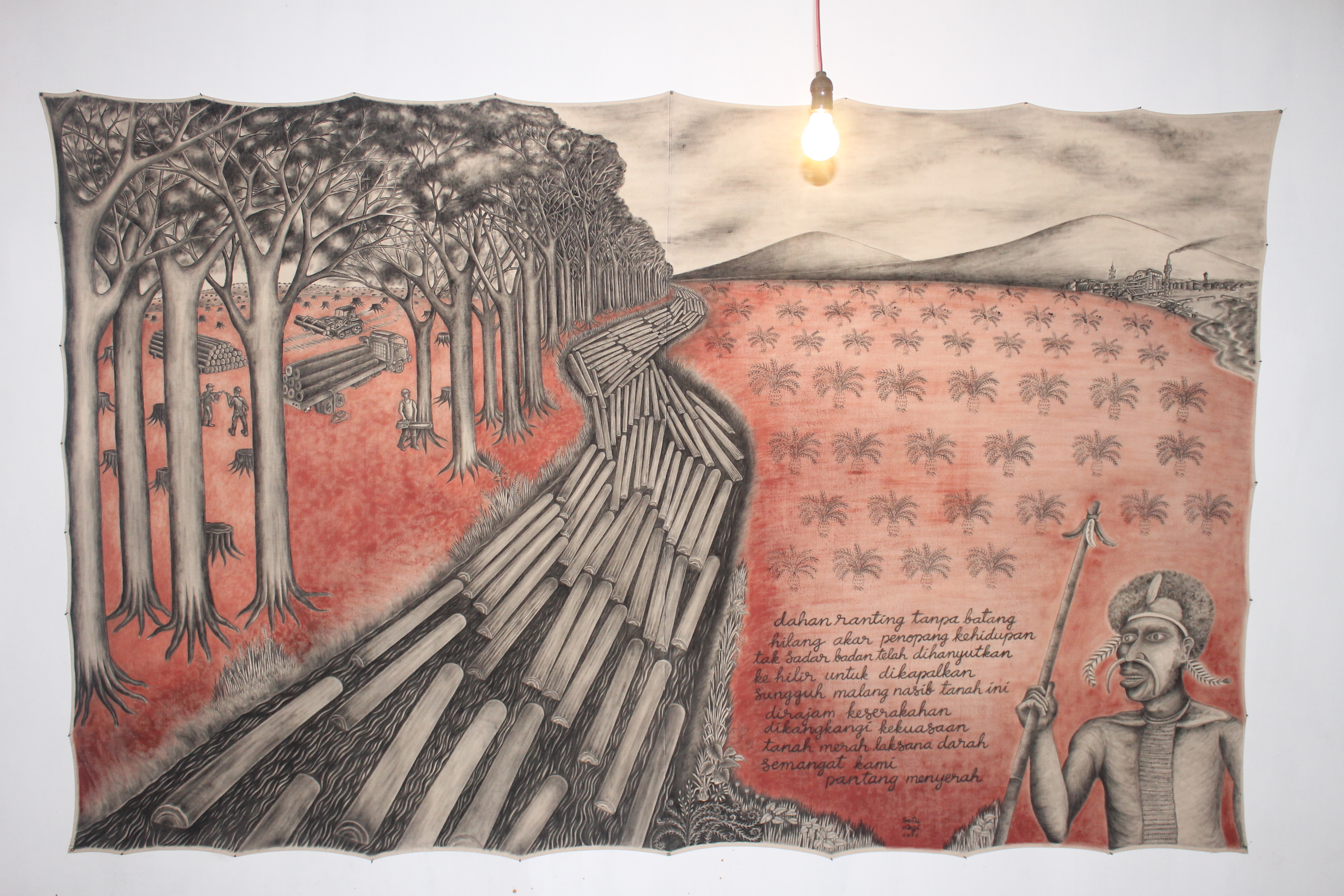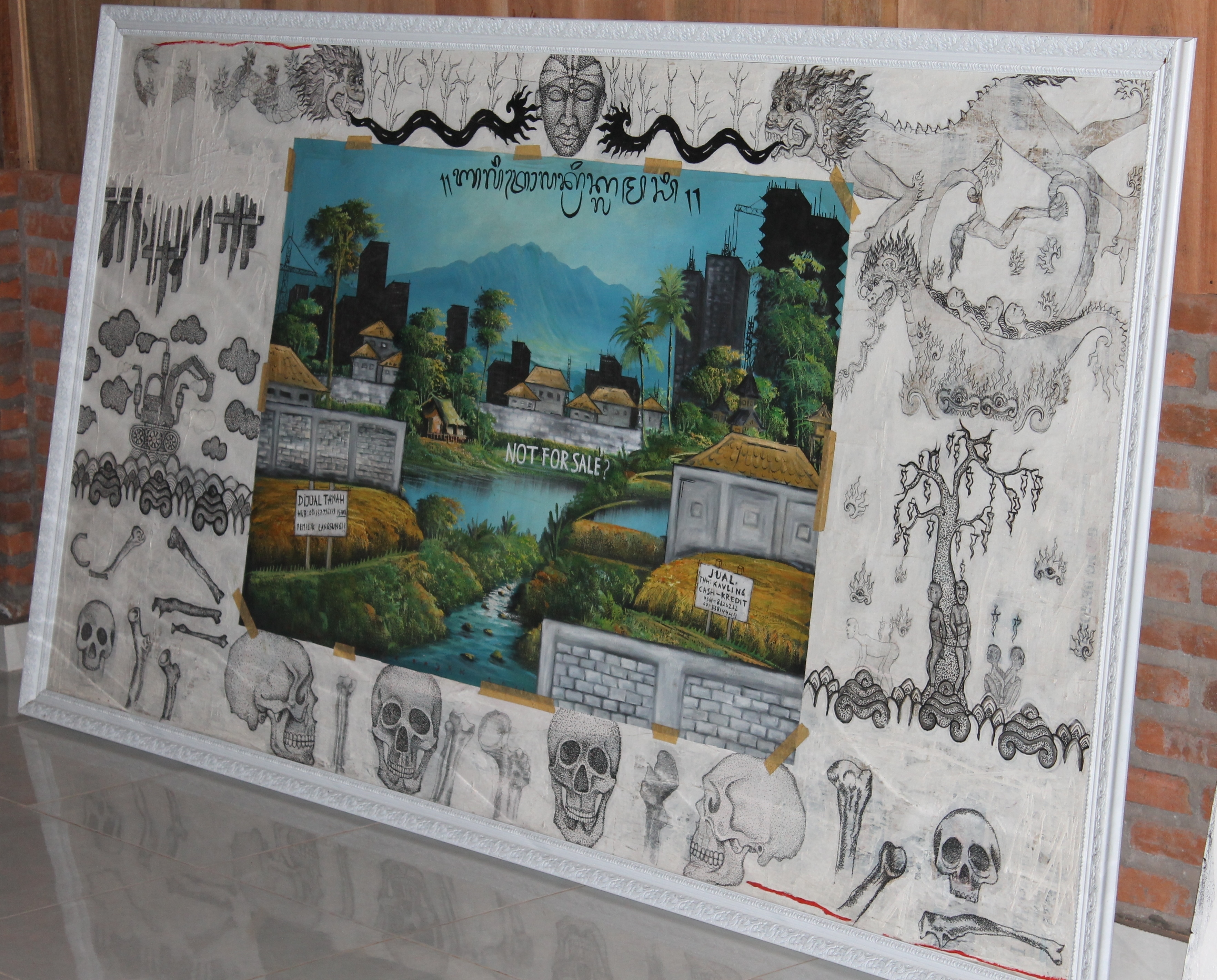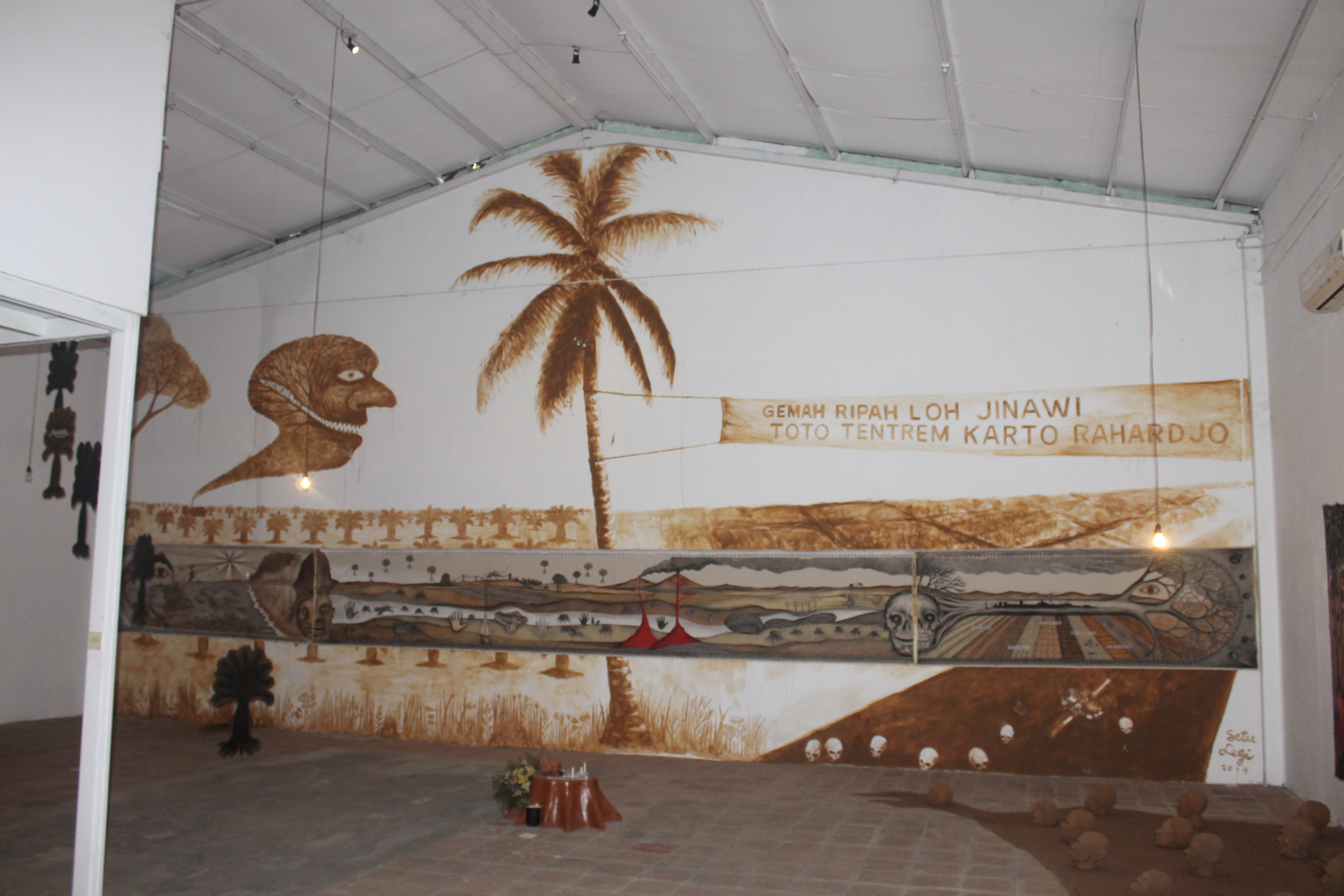
Arts & Culture
The life stories of Gippsland lakes fishers

Art and environmental activism go together for many Indonesian artists, but some are also pushing for a reckoning as a new way forward for the country
Published 28 May 2021
Prominent Indonesian artist Made Bayak is as much an activist as an artist.
He is one of the leading figures opposing the environmental and social damage caused by land reclamation in Bali, and is well known for his ‘Plasticology’ campaign against plastic pollution on the island.
This campaign incorporates plastic rubbish as a medium in an ongoing series of art works, collaborations and educational programs.

Bayak isn’t alone among Indonesian artists in combining art with environmental activism. In doing so, they are exploring broader social, political and historical processes and injustices in the country.
In a real sense, artists in Indonesia are proving to be an important force for change, posing new socio-political solutions in a country that is still coming to terms with its recent history of traumatic destructive economic development.

Arts & Culture
The life stories of Gippsland lakes fishers
For instance, in his mixed-media work Industry, Hidden History and Legacy of the Island of the Gods (2013), Bayak modified a landscape painting in the romantic and colonial-era ‘Beautiful Indies’-style from a local tourist shop with drawings of modern buildings, walls and construction sites.
He filled the lower edge of his collage with drawings of skulls and bones, which referred to Balinese mass graves from the anti-communist violence of the mid-1960s.
For the artist, the graves constituted a foundation of the cultural and economic development of the island, including the branding of Bali as a tourist paradise.
While local communities have organised large-scale ceremonies to purge themselves of the tragic events of the past, Bayak’s creative work and activism is part of a struggle ‘against forgetting’ (melawan lupa) and supporting fact-finding and critical discussion.
One of the main political factors that has shaped Indonesia’s natural environment, material infrastructure and social life is the economic development (pembangunan) during President Soeharto’s New Order regime (1967-1998).
This authoritarian regime attempted to promote ‘order’ through a combination of development programs and state and military control aimed at depoliticising society.

It presented itself as a correction to the socio-political upheaval and economic recession during the final stages of Sukarno’s presidency, retrospectively dubbed the ‘Old Order’.
The New Order regime’s ideological path was paved with the annihilation of the Indonesian Communist Party (PKI) and the massacre of at least 500,000 members and alleged members of the party in 1965–1966.
Throughout the New Order, freedom of speech and other civil liberties were strongly curbed, and the media were subject to state propaganda and censorship designed to promote economic advancement.
This led to widespread environmental and social exploitation, and widened the gap between rich and poor.

Arts & Culture
Dying apart, buried together
Another famous artist, Setu Legi (b. 1971), has produced a series of art works that specifically deal with the destructive environmental and social impact of oil palm plantations in Indonesia’s West Papua province.
One example is Monokultur (2014), a wall-to-wall and floor-to-ceiling mural, which was partially covered by a series of acrylic paintings. Human skulls on a newly constructed highway symbolise the replacement of the original, rich biodiversity of West Papua.
The mural includes banners with the old New Order slogans Gemah ripah loh jinawi (‘Very prosperous and very fertile’) and Toto tentrem karto raharjo (‘Order and prosperity’), highlighting the gap between the ideals and the reality of environmental and socio-cultural destruction.
One of Indonesia’s leading female artists, Arahmaiani (b. 1961), also engages with cultural and religious traditions, including Islam, Buddhism and Hinduism, to politicise and historicise anthropogenic environmental destruction, as well as explore alternative models for a more sustainable future.

She has presented herself as a ‘nomadic’ artist, with environmental art and activist projects in Indonesia and elsewhere, particularly Tibet.
Her nomadic lifestyle has been partially the product of self-exile. In the mid-1990s, she felt forced to leave Indonesia after receiving death threats from Islamic hardliners, who objected to the combination of Malay in Arabic characters and male and female genitalia in her painting, Lingga-Yoni (1994).
Arahmaiani’s international travels and collaborations have enabled her to not only deepen her knowledge about organic farming and other practical solutions to environmental destruction, but also to study relatively under-explored aspects of Indonesia’s political and religious histories.

It has helped her to imagine alternative notions of her homeland, which in themselves can contribute to more comprehensive and inclusive models of social and environmental renewal.
In 2010, Arahmaiani started to work at the Buddhist Labu monastery in the Kham region of the Tibetan Plateau, shortly after the area was hit by an earthquake.
During the first five years of regular visits to the monastery, she facilitated various environmental projects, ranging from garbage collection and rubbish recycling to water management, tree-planting, organic farming and reviving nomadic life and culture.
After attracting the participation of surrounding villagers, the Chinese government eventually decided to join and support the programs.
However, Arahmaiani’s environmental activism goes beyond land conservation and organic food, also proposing a deeper, more sustainable focus on ‘the values and ethics of life that support the harmony and respect for nature and the environment’.

One of her works, inspired by the cultural connections between Tibet and Indonesia, and the links between religion and nature, is her installation Memory of Nature.
It consists of wood, soil and seeds, shaped in the mandala form of the ground plan of the Borobudur temple in Central Java – the largest Buddhist temple in the world. In performances, Arahmaiani and audience members water the soil and seeds, so green shoots of plants can grow from the low, wooden structure.

Politics & Society
Australia needs to embrace ‘Asianness’ as part of ‘Australianness’
The mandala shape represents the cosmos with all its components, while the plants symbolise a cycle of growth – fruit-bearing, ripening, decay and regrowth. The plants mirror the religious principles of ascension and descension that are central to the architecture of the Borobudur.
With this and similar projects, Arahmaiani is promoting a deeper historical understanding about Buddhist cultural heritage and living traditions in Indonesia that counters the narrow religious-nationalist causes and discourses of increasingly militant Islamic groups.
Through their public prominence, visual strategies and imaginative skills, these and other Indonesian artists are adding a multi-dimensional approach (historic, cultural, religious and environmental) to the calls within civil society for action and change.
What unites them is an underlying message that if we limit ourselves to discussing technological solutions to the environmental crisis, rather than addressing the deeper drivers and lessons of environmental destruction, we run the risk of simply objectifying the natural environment – which has been one of the causes of its historical exploitation in the first place.
A extended version of this article appears in Melbourne Asia Review at the Asia Institute, University of Melbourne.
Banner: Tanah Merah (2009-2010), by Setu Legi. Picture: Edwin Jurriens